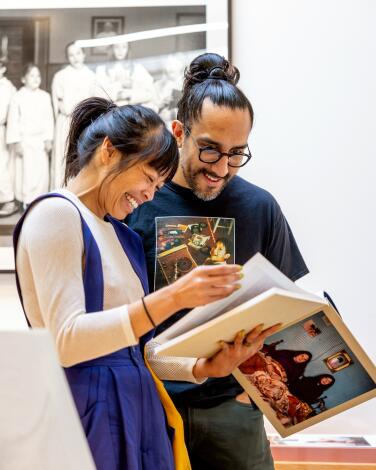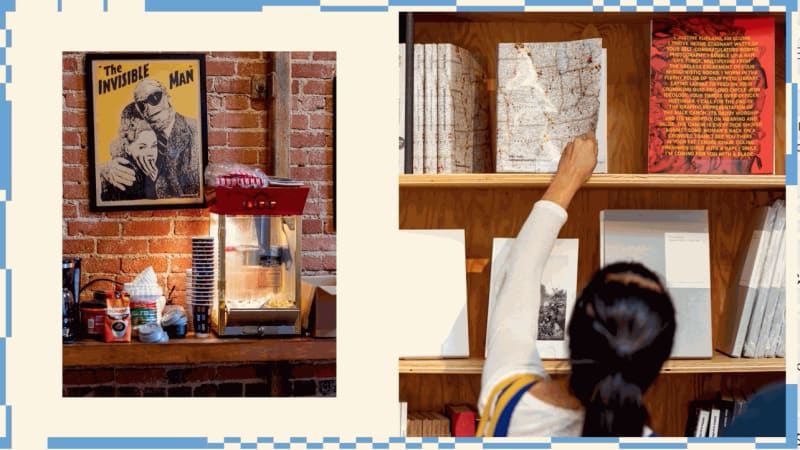Visitors don’t come to the Arts District to escape from city life: This is downtown Los Angeles, and the neighborhhood is gritty. But it’s also a vortex of creative energy with a thriving community built on legacies of art, punk and industry.
The Arts District has its own urban geography: Sandwiched between the Los Angeles River rail yards and Alameda Street, its bridges and roads are thoroughfares for commuters and freight barreling to and from the nearby 10, 101 and 5 freeways.
Here among the warehouses and truck depots is a nexus of independent galleries, public art, edgy shops and some of the best restaurants and cafes in the country. Just beyond 1st Street was the city’s original red-light district. And before it was the Arts District, the area was known as the Warehouse District. Continuous new construction — including its first (and controversial) high rise — promises future transformation.
Downtown is made up of several neighborhoods, and over the course of a decade I’ve lived in its Historic Core, Little Tokyo and Arts District, each of them profoundly distinct. Friends in the core jokingly call the Arts District “the suburbs of downtown.”
That’s partly because the Alameda corridor divides it from the more densely populated historic center, Skid Row, Little Tokyo and Olvera Street. It’s also subtextual commentary on the sprawl of housing and retail developments, encroaching on the once-inexpensive lofts that drew artists here in the first place. (What used to be a bar that was the epicenter of L.A. punk rock is now a store selling T-shirts that say “Brentwood Swim Club.”)
The late Bloom, with the eponymous “square,” was a beloved community activist who owned a general store on Hewitt Street. “I get a feeling here I haven’t gotten anywhere else,” he said in a 1994 interview with the L.A. Times. “It may look desolate, but it’s not. There’s no place I’d rather be.”
On the south fringes are abandoned buildings, piles of detritus, parked big rigs. But also, members-only club Soho House; Maru, arguably the most stylish coffee shop in L.A.; Bestia, one of the hardest reservations anywhere; and avant-garde clothing boutiques such as H. Lorenzo and Dover Street Market. Some alleyways you avoid, and some lead you to a secret movie theater, mural, gym, tea house or tacos.
The north half of the Arts District is a playland of bars, breweries, restaurants, galleries and stores. The international art gallery Hauser & Wirth established itself as a central hub when it debuted in a former flour mill on 3rd Street in the spring of 2016. But the artist ghosts of another generation might haunt the American Hotel (the building with Kent Twitchell’s giant mural of Ed Ruscha overlooking Bloom Square) around the corner on Traction, where the punk scene at legendary Al’s Bar blazed in anarchic fashion until the club closed in 2001. They probably never expected a Kreation juice bar would open across the street.
Jump to the present, and the 35-story mixed-use high-rise looming above the 4th Street Bridge is nearing completion. (It was connected to a corruption scandal centered on former city councilmember Jose Huizar and bribes from real estate developers.) Several hundred new apartments have been built at Alameda and Industrial, with more to come. Film production studios are taking over old warehouses. A brand-new shopping center on Traction called Signal brings luxe retailers including Flamingo Estate, M5 Shop, Lawson Fenning and Alchemy Works.
The neighborhood keeps changing. For many who live, work and play here, there’s still no place they’d rather be.
What's included in this guide
Anyone who’s lived in a major metropolis can tell you that neighborhoods are a tricky thing. They’re eternally malleable and evoke sociological questions around how we place our homes, our neighbors and our communities within a wider tapestry. In the name of neighborly generosity, we included gems that may linger outside of technical parameters. Instead of leaning into stark definitions, we hope to celebrate all of the places that make us love where we live.![]()


